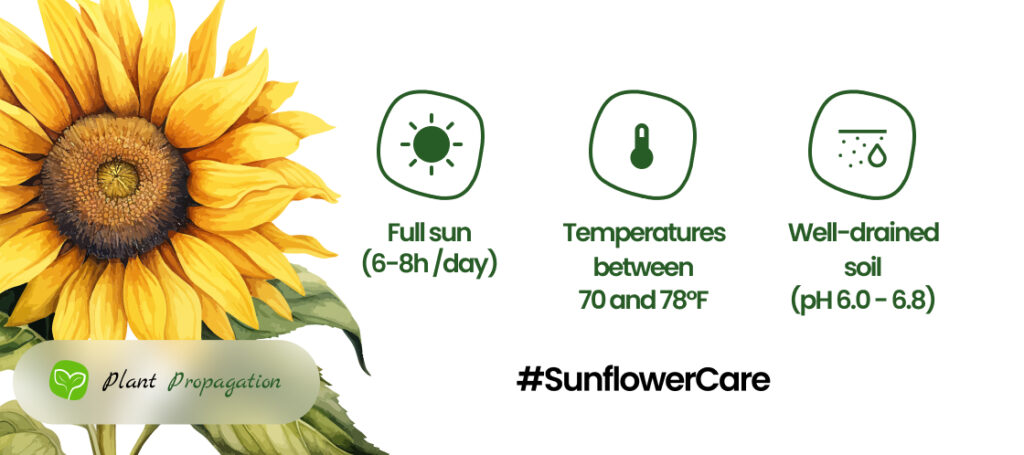
Welcome to the wonderful world of sunflowers! These vibrant beauties not only brighten up our gardens but also captivate us with their towering stature and cheerful blooms. Whether you’re a seasoned gardener or just starting out, understanding how to prune Sunflowers the right way is key!
In this guide, we’ll explore the art of pruning sunflowers, uncovering the secrets to healthier plants, bigger blooms, and even taller sunflowers! From why pruning is essential to the tools you’ll need and the step-by-step process, we’ve got you covered. We’ll also delve into when to prune your sunflowers to ensure optimal growth and discuss aftercare tips to keep your sunflowers flourishing long after pruning.
So, grab your gardening gloves and let’s embark on this sunflower journey together!
Why Should You Prune Sunflowers?
Trimming sunflowers isn’t totally necessary. Honestly, they’ll do okay without it, but they won’t look as nice, won’t get as tall, won’t have as many flowers, and won’t make as many seeds. Regular trimming makes sunflowers healthier with bigger, more colorful flowers, and it keeps diseases away by getting rid of places where germs can grow.
When to Prune Sunflowers?
Understanding the right time to prune your sunflowers can make a big difference in their health and appearance.
- Tailor your pruning schedule to your sunflower type. For perennial sunflowers, like Maximilian or swamp varieties, a good rule is to prune them twice a year. In late spring or early summer, cut them down to half their size, then reduce their height by a third in June or July.
- Consider your climate. If you’re living in a warmer area, try to trim certain sunflower types like Maximilian or swamp varieties to about two-thirds of their original height around June.
- Avoid pruning after the first blooms. Most perennial sunflowers bloom from mid to late summer. Once you see those buds forming, it’s best to hold off on any pruning so you won’t hurt blooming.
The Tools You’ll Need
Whenever you prune a plant, you need to have the right tools for the job! Thankfully, sunflowers don’t require an arsenal. Just grab a pair of sharp and clean pruning shears to snip away with precision, and don’t forget your trusty gloves to keep those hands safe from prickly surprises. Let’s get those sunflowers trimmed up and looking their best!

How to Prune Sunflowers Step-by-Step
Now that you have your tools ready, let’s dive into the step-by-step process of pruning sunflowers:
- Prepare Your Tools Before diving into pruning, ensure your pruning shears are clean and sterilized. This helps prevent the spread of diseases between plants and ensures clean cuts.
- Start with Unhealthy Parts Begin by inspecting your sunflower for any signs of sickness or damage. Trim away any sick, weak, or dead branches, as well as those that are crossing or rubbing against each other. This allows the plant to redirect its energy towards healthy growth.
- Shape Your Perennials Once you’ve cleared away the unhealthy parts, take a step back and assess the shape of your perennial sunflowers. Trim them to achieve your desired shape, whether it’s a tidy bushy look or a more natural, free-flowing form. Don’t be afraid to get creative!
Pruning for taller Sunflowers
Want your sunflowers to stand tall and proud? Here’s a simple trick to help them reach new heights:
- Spot the Side Shoots: Take a peek at your sunflower plant and look for any extra shoots sneaking out from the lower parts of the stem.
- Snip Away Side Shoots: Armed with sharp shears, gently trim off those side shoots, especially the ones near the bottom. This lets your sunflower focus all its energy on shooting skyward.
- Cut with Care: Make clean cuts just above where those side shoots start. No need to get too close to the main stem – just give those sneaky side shoots the chop.
- Keep an Eye Out: As your sunflowers keep growing, stay on the lookout for any new side shoots trying to steal the spotlight. Trim them off to keep your sunflowers focused on reaching for the sky!
Your sunflowers will soon be towering above the rest, making your garden a sight to behold!
Aftercare
After pruning your sunflowers, the most important thing is to water them. You are encouraging new growth with pruning, so you need to make sure the needed nutrients are there. Water your sunflowers regularly, especially during hot, dry weather, and fertilize them as needed to provide essential nutrients. Keep an eye out for any signs of stress or disease and take action promptly when needed.

Frequently Asked Questions
Do sunflowers need to be pruned?
Sunflowers generally don’t need much pruning, but if they’re grown close together, a little trim can help. For perennial sunflowers, prune twice a year using pruning shears, once in late spring and once in summer. Annual sunflowers should be cut to the ground when they start browning and drying.
When should you cut sunflowers?
You should cut sunflowers when you see the petals sticking out sideways from the middle. That’s when they look their best for bouquets or decorations.
Should I remove lower leaves from sunflowers?
If you’re aiming to beautify your sunflower by taking off some leaves, remember: fewer leaves mean less energy for the plant. Overdoing it can lead to smaller flowers and fewer seeds.
Should you deadhead sunflowers?
Yes, you should deadhead sunflowers to keep them blooming all season. By doing so, they’ll continue producing new blossoms and seeds, often sprouting the next sunflower just inches from where you deadheaded.
Will pruning sunflowers make them grow taller?
If you prune away all the lower side shoots, your sunflower can focus its energy on growing taller.
